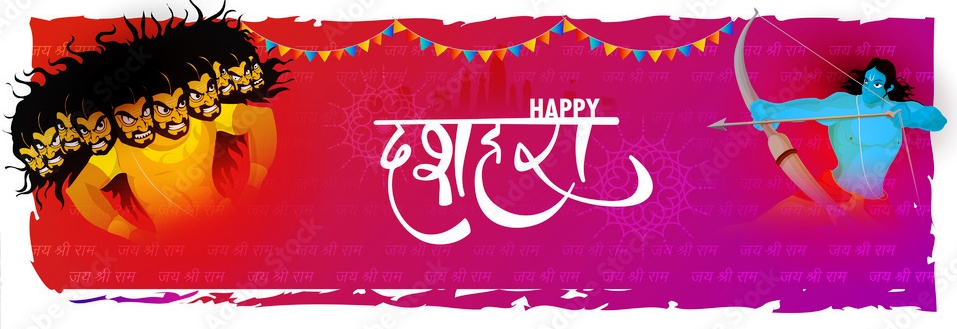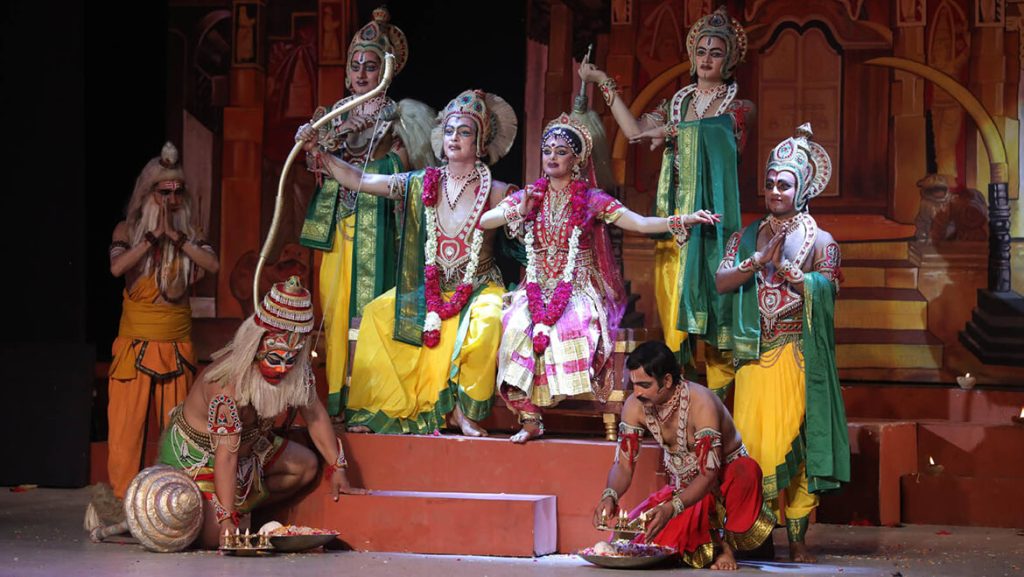- Private car and driver in Delhi / India
- +91-8447445445
- info@discoverindiabycar.com sugar.ankit@yahoo.com
 +91-9818434712
+91-9818434712
Dussehra
A significant Hindu festival known as Vijayadashami, often referred to as Dussehra,[a] Dasara, or Dashain, is observed annually after the conclusion of Navaratri. Vijayadashami is written as Vijayadaam in Sanskrit. It is celebrated on the tenth day of the seventh lunar month of Ashvin in the Hindu calendar. The celebration, which usually takes place in September and October of the Gregorian calendar.

Vijayadashami is observed for numerous reasons and is observed and observed differently throughout the Indian subcontinent. In parts of the southern, eastern, northeastern, and some of the northern parts of India, Vijayadashami marks the end of the Durga Puja festival. In order to restore and protect dharma, goddess Durga defeated the buffalo monster Mahishasura. The holiday is known as Dussehra in the states in the north, centre, and west (also spelled Dasara, Dashahara). It commemorates the hero Rama’s victory over the demon king Ravana in these areas and signals the conclusion of Ramlila. Alternately, it signifies respect for one of the goddess Devi’s incarnations, such as Saraswati or Durga.
Ramayana
The epic Ramayana served as the inspiration for this festival’s celebration. It is the day Rama overcomes Ravana, the demon king, after Sita is taken hostage. Sita is abducted by Ravana, who takes her to his realm in Lanka (present day Sri Lanka). As Rama begs Ravana to free her, he refuses, and the conflict worsens until war breaks out. A boon from the creator-god Brahma that he would never longer be able to be killed by gods, demons, or spirits was given to Ravana prior to this after he had undertaken tremendous penance for ten thousand years. But Lord Vishnu’s human incarnation, Rama, vanquishes and kills him, nullifying Lord Brahma’s blessing. Rama engages in combat with Ravana, killing him to put an end to his evil rule. Rama’s triumph against Ravana led to the establishment of Dharma on Earth. The event celebrates the victory of Good over Evil.

Mahabharata
Arjuna, a Pandava warrior, and the Kauravas are defeated on Vijayadashami in the Mahabharata.The epic recounts the adventures of the Pandava brothers, who are known to have spent their thirteenth year of exile in Matsya, the Virata realm, while hiding their identities. They are said to have stored their heavenly weapons for a year in a Shami tree before travelling to Virata. The Kauravas made the decision to assault the kingdom at this time, and Arjuna successfully routed the entire Kaurava army by taking the weapons from the Shami tree.
Regional Variations
India's northern region
Ravana effigies are burned to commemorate Dasara. Dasha-Hara, which means “10 days,” is a holiday celebrated mostly in northern and western India in honour of Lord Rama. Many outdoor festivals all around the country feature thousands of drama-dance-music shows based on the Ramayana and Ramcharitmanas (Ramlila), as well as temporary staging areas with effigies of the demons Ravana, Kumbhakarna, and Meghanada. The effigies are burned during bonfires on Vijayadashami or Dussehra evening. While Dussehra is celebrated on the same day throughout India, the celebrations that precede it differ. The nine days preceding the festival are often spent performing the “Rama Lila,” a condensed version of the Rama, Sita, and Lakshmana tale. In other cities, like Varanasi, performance artists freely retell the entire tale in front of the audience every evening for a month.

Dussehra in Kullu
The Kullu valley in Himachal Pradesh celebrates Kullu Dussehra, which is known locally for its sizable festival and parade that draws an estimated 500,000 spectators. The festival, which is celebrated with a parade like everywhere else in the Indian subcontinent, is a representation of Raghu Nath’s triumph of good over evil. The arrival of floats carrying gods from several nearby places and their trek to Kullu are what make the Kullu Dussehra procession unique.
India's south
Mysore A popular tourist destination in Karnataka is the Dasara procession and celebrations. In South India, Vijayadashami is observed in a variety of ways. A few instances of festivals include worshipping Durga, lighting up significant forts like the one in Mysore, and putting colourful figurines known as golus on display.The celebration, known as Mahanavami in the Vijayanagara Kingdom of the fourteenth century, had historical significance. Niccol de’ Conti, an Italian traveller, referred to the festival’s intensity and significance as a grandiose religious and military celebration with royal assistance. The celebration honoured Durga as the goddess of war (some texts refer to her as Chamundeshwari). Athletic competitions, singing and dancing, pyrotechnics, a military procession, and public charitable donations were all part of the festivities.
Mysore has long been a significant hub for Dasara-Vijayadashami festivities.








